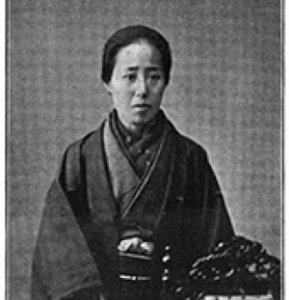Presented By: Center for Japanese Studies
CJS Noon Lecture Series
From Geisha to Activist: Sumiya Koume (1850-1920) and the Gender System in Modern Japan

Speaker: Marnie Anderson, Associate Professor, History, Smith College
Marnie S. Anderson received her Ph.D. in modern Japanese history from the University of Michigan in 2005. Her first book, A Place In Public: Women's Rights in Meiji Japan (Harvard University Asia Center, 2010), examines discourses about gender, citizenship, and the nation in the late nineteenth century. Her current research interests include legal history and histories of political activism at the local level.
Abstract: Sumiya Koume (1850-1920) underwent several dramatic transitions during her lifetime. She worked as a geisha, a concubine, and later became a social activist in the Freedom and People's Rights movement. She taught Japanese to westerners, founded a school, and played a central role in running the Okayama Orphanage. Although most scholarship on Meiji-era (1868-1912) women analyzes their experiences in terms of the "good wife, wise mother" (ryosai kenbo) paradigm or the birth of feminism, neither framework applies to Sumiya’s case. By drawing on several representations of Sumiya in Japanese and English, I consider what her life reveals about opportunities for some women in late nineteenth-century Japan.
Marnie S. Anderson received her Ph.D. in modern Japanese history from the University of Michigan in 2005. Her first book, A Place In Public: Women's Rights in Meiji Japan (Harvard University Asia Center, 2010), examines discourses about gender, citizenship, and the nation in the late nineteenth century. Her current research interests include legal history and histories of political activism at the local level.
Abstract: Sumiya Koume (1850-1920) underwent several dramatic transitions during her lifetime. She worked as a geisha, a concubine, and later became a social activist in the Freedom and People's Rights movement. She taught Japanese to westerners, founded a school, and played a central role in running the Okayama Orphanage. Although most scholarship on Meiji-era (1868-1912) women analyzes their experiences in terms of the "good wife, wise mother" (ryosai kenbo) paradigm or the birth of feminism, neither framework applies to Sumiya’s case. By drawing on several representations of Sumiya in Japanese and English, I consider what her life reveals about opportunities for some women in late nineteenth-century Japan.